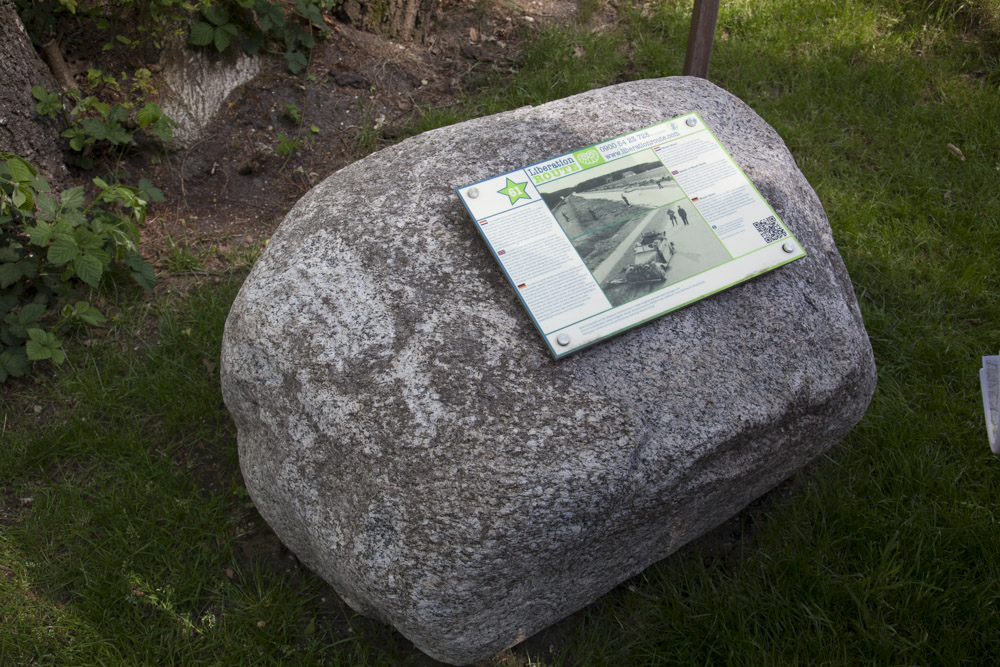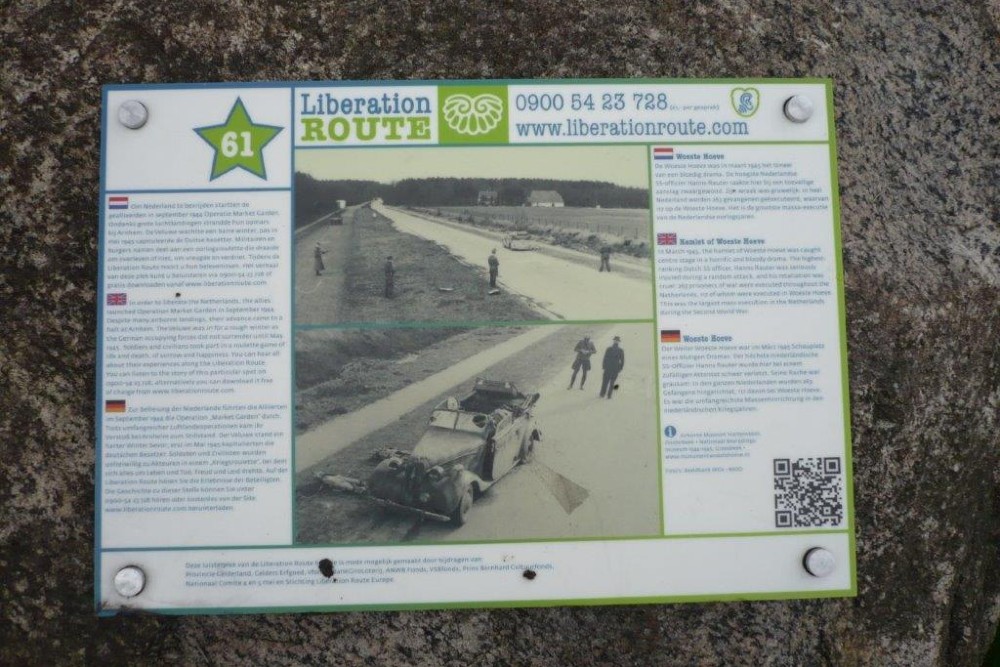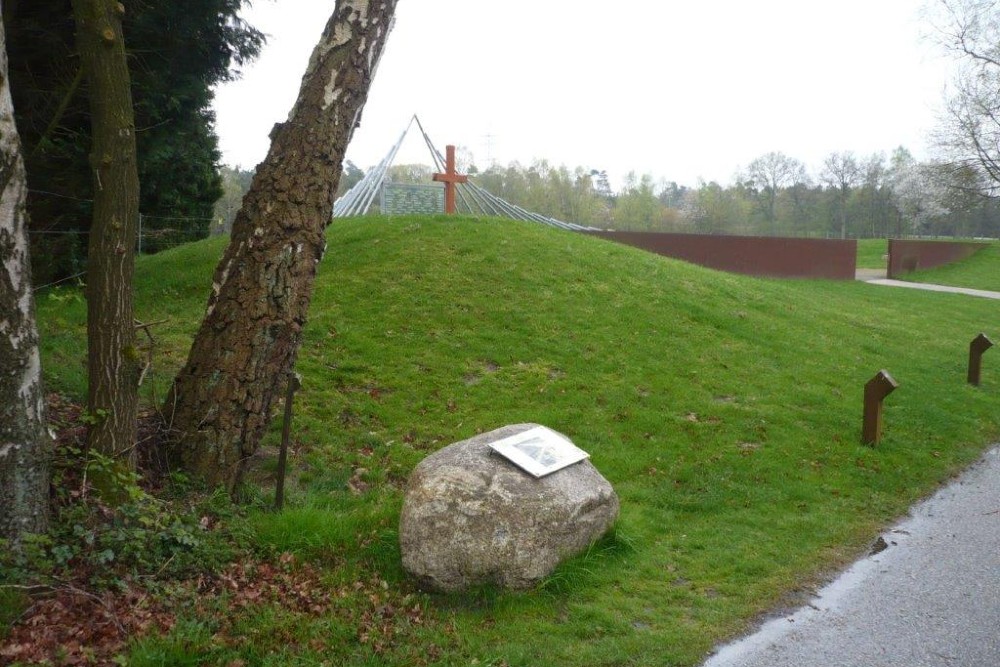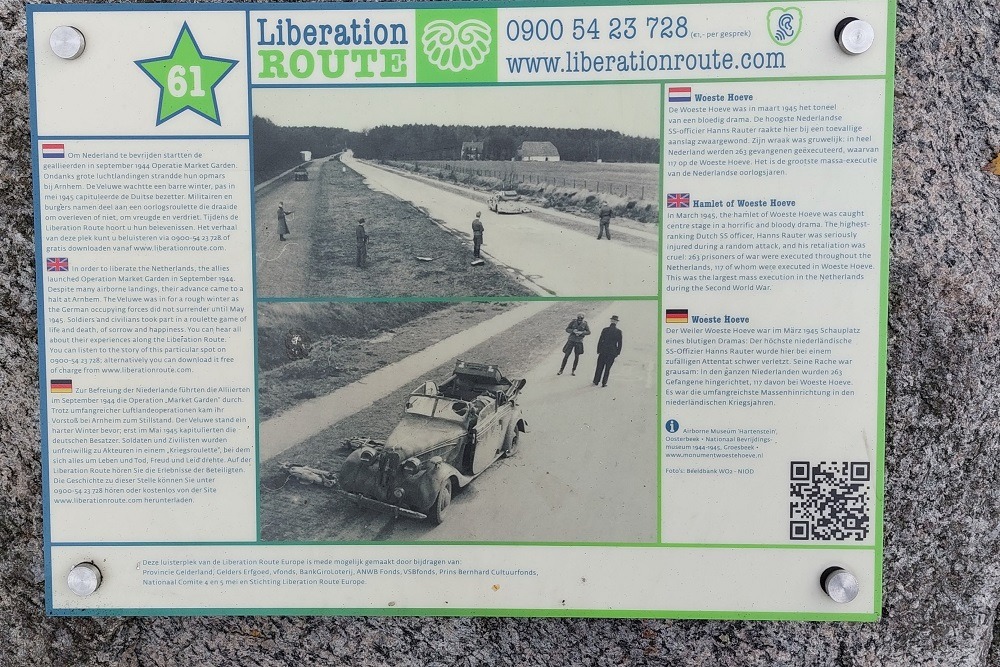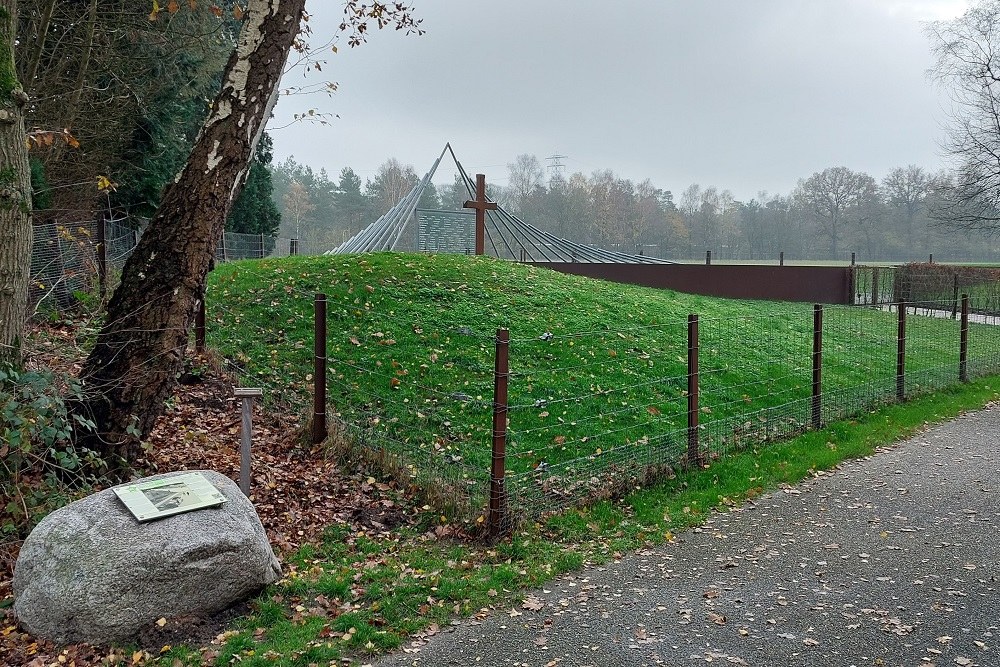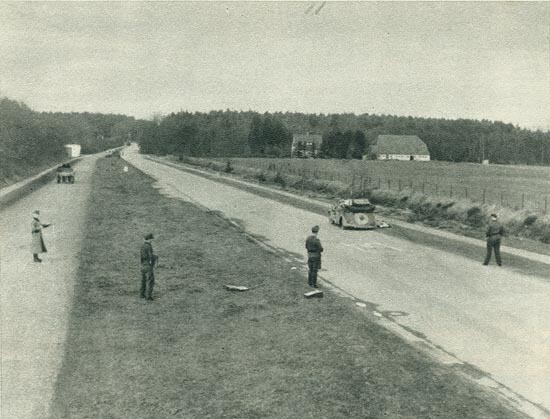Liberation Route Marker 061: Hamlet of Woeste Hoeve
Hamlet of Woeste Hoeve
In March 1945, the hamlet of Woeste Hoeve was caught centre stage in a horrific and bloody drama. The highest-ranking Dutch SS officer, Hanns Rauter was seriously injured during a random attack, and his retaliation was cruel:263 prisoners of war were executed throughout the Netherlands, 117 of whom were executed in Woeste Hoeve. This was the largest mass execution in the Netherlands during the Second World War.
The bizarre thing about the attack on Rauter is that it was not intended that way at all. The Apeldoorn resistance needed a German truck to intercept a German meat transport. But as the resistance fighters came out of their ambush near Woeste Hoeve on the night of March 6-7, 1945, they suddenly spotted a gray-green BMW passenger car. A gunfight ensued in which all the occupants of the car were killed except one man. In the darkness, the resistance fighters had not seen that it was Rauter, nor that he was still alive.
Rauter was found some time later and taken to a hospital. Assuming an attempt on his life, he immediately ordered the worst conceivable retaliatory measure: the execution of 300 Todeskandidaten, prisoners sentenced to death for various reasons. In the end there were 263, which was all the directors of the various prisons could provide. And they were not all Todeskandidates either; not only resistance fighters were executed, but also a number of accidental prisoners. The executions were carried out in several places, 117 of them at Woeste Hoeve. The prisoners were put in twenties from Apeldoorn on a trailer and driven to the Woeste Hoeve, where the fifty-man firing squad was ready. After five minutes the next batch arrived.
The corpses were laid by the Germans along the main road. Later they were put away in a mass grave at Heidehof cemetery in Ugchelen. After the liberation of Apeldoorn, the mass grave was opened and the bodies identified as best as possible. Some victims were reburied at Heidehof on the 'Woeste Hoevelaantje', some others lie on the Loenen Field of Honor. On the Woeste Hoeve itself is a monument to the memory.
Audiospot - Hamlet of Woeste Hoeve
Liberation Route Europe is a certified Cultural Route of the Council of Europe. With hundreds of sites and stories in nine European countries, the route links the main regions along the advance of the Allied Forces in 1943-1945.
The entire route consists of themed routes that can be travelled by by hiking, walking, cycling and car. These routes pass numerous historical and interesting sites and tell stories from a multitude of perspectives that were important in the final phase of World War II.
Many routes feature listening spots, offering the opportunity to listen to a historical story at a location. In addition, many ‘Vectors of Memory’ have been placed, indicating that the passer-by is on one of the Liberation Routes.
The routes can be found on the Liberation Route Europe website or in the app through which many stories can also be listened to.
Do you have more information about this location? Inform us!
Source
- Text: TracesOfWar & Liberation Route Europe
- Photos: Arjan Vrieze (1), Arie van Wijngaarden (2, 3), Peter Schipper (4, 5)
Related books
Nearby
Museum
- Museum Airbase Deelen - Deelen
- Collection '40-'45 - Beekbergen
- Historical Museum Grenadiers and Hunters - Arnhem
Point of interest
- Remembrance and Education Center Loenen - Loenen
- Remains German Radio Bearing Station "Teerose I" - Arnhem
- Remains German Radio Bearing Station "Teerose III" - Roozendaal
Monument
- Memorial De Woeste Hoeve - Hoenderloo (Beekbergen)
- Memorial Unknown Resistance Fighter Dutch Field of Honour Loenen - Loenen
- Memorial Victims Tarakan 1942 Dutch Field of Honour Loenen - Loenen
Cemetery
- National Veterans Cemetery Loenen - Loenen
- Dutch Field of Honour Loenen - Loenen
- Dutch War Grave Municipal Cemetery Beekbergen - Beekbergen
Remembrance Stone
- Stumbling Stone Kerkweg - Beekbergen
- Memorial Stones Arnhemseweg 169 - Apeldoorn
- Memorial Stone Ruimzichtlaan 1 - Apeldoorn
